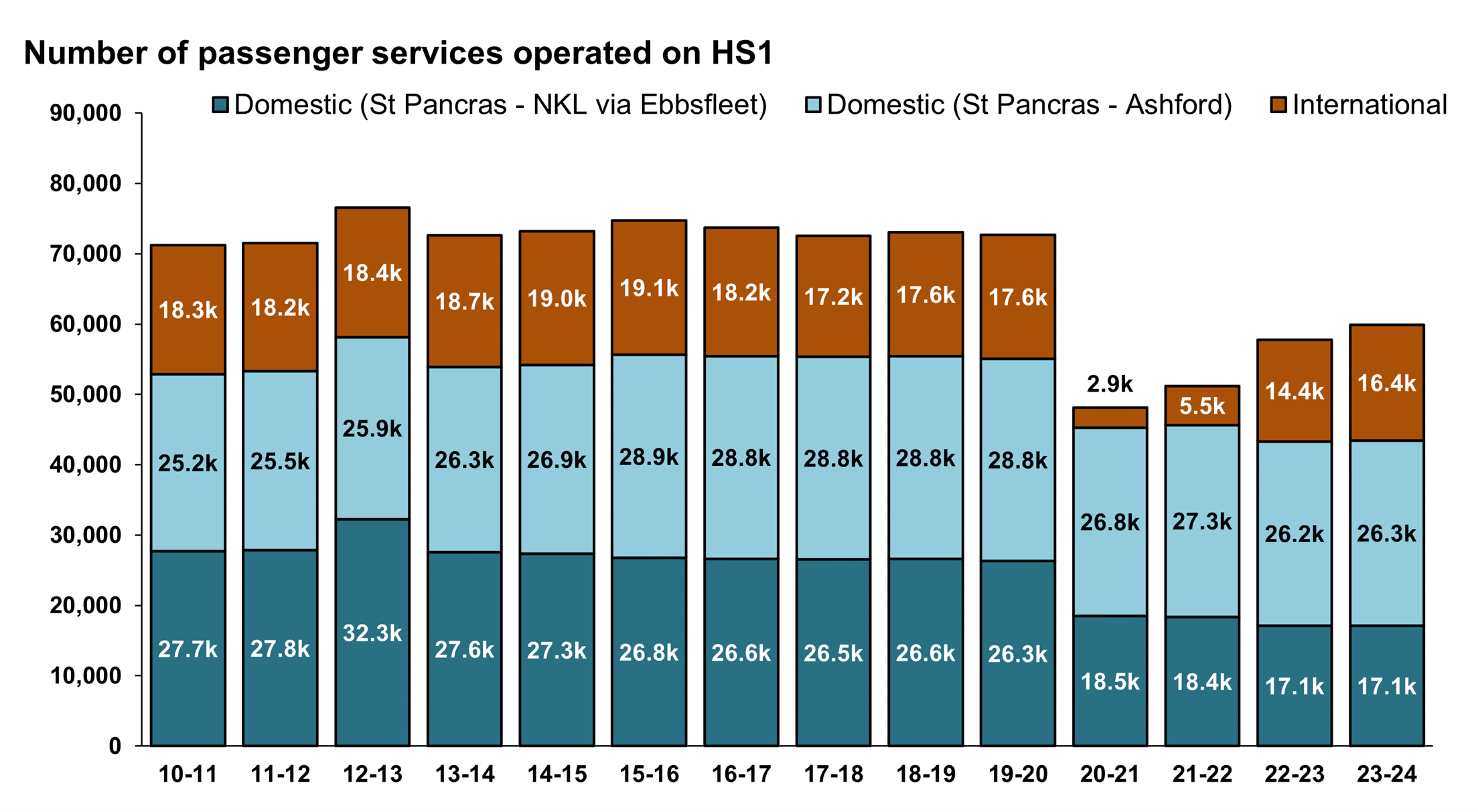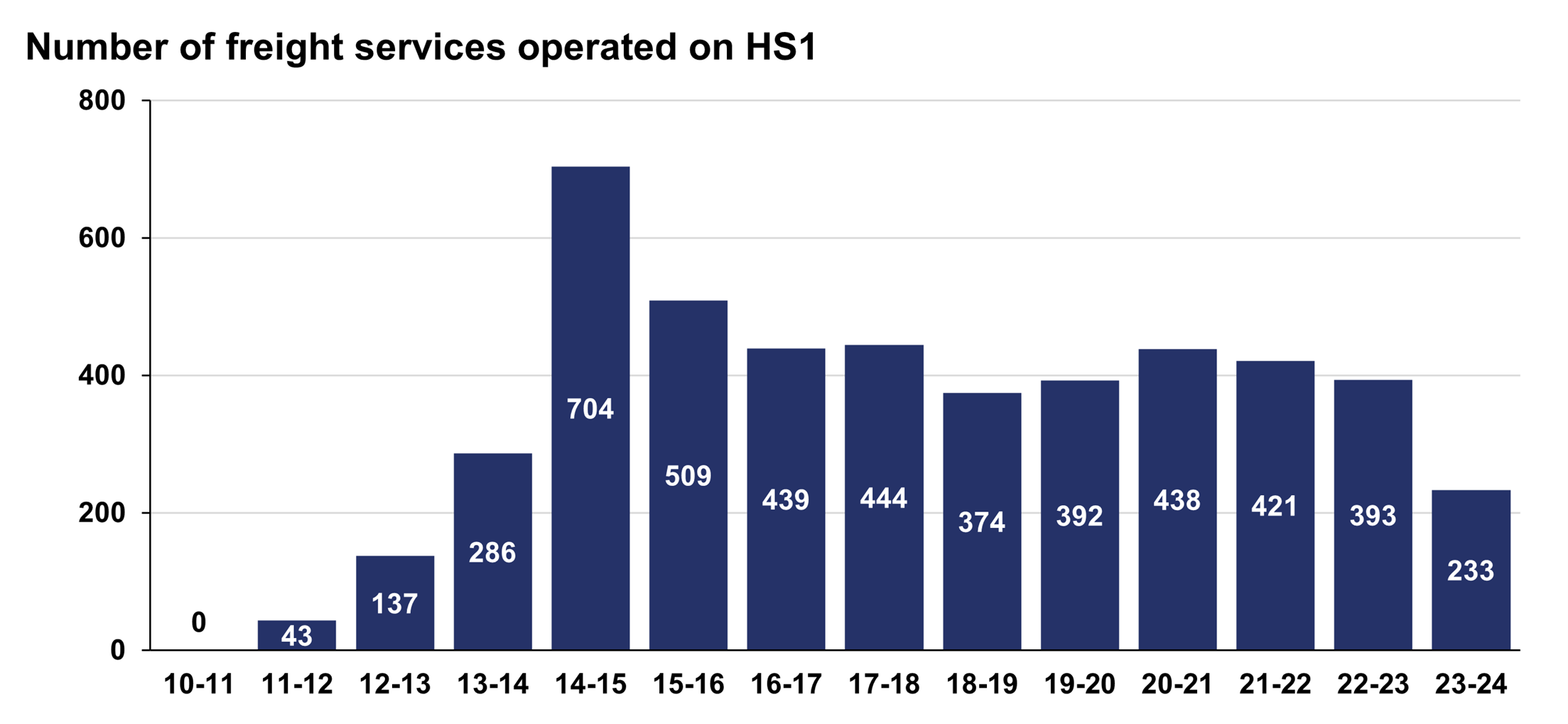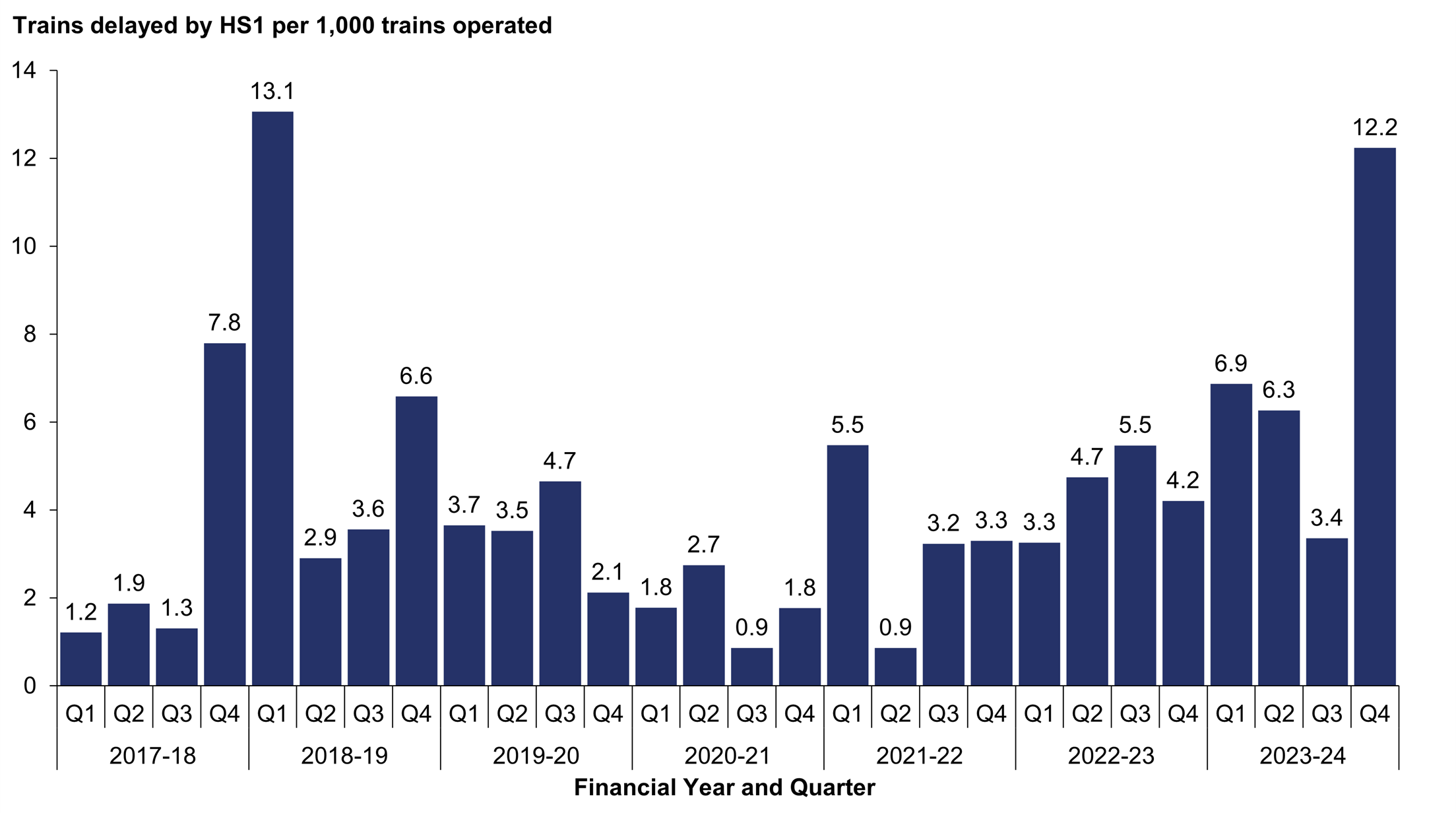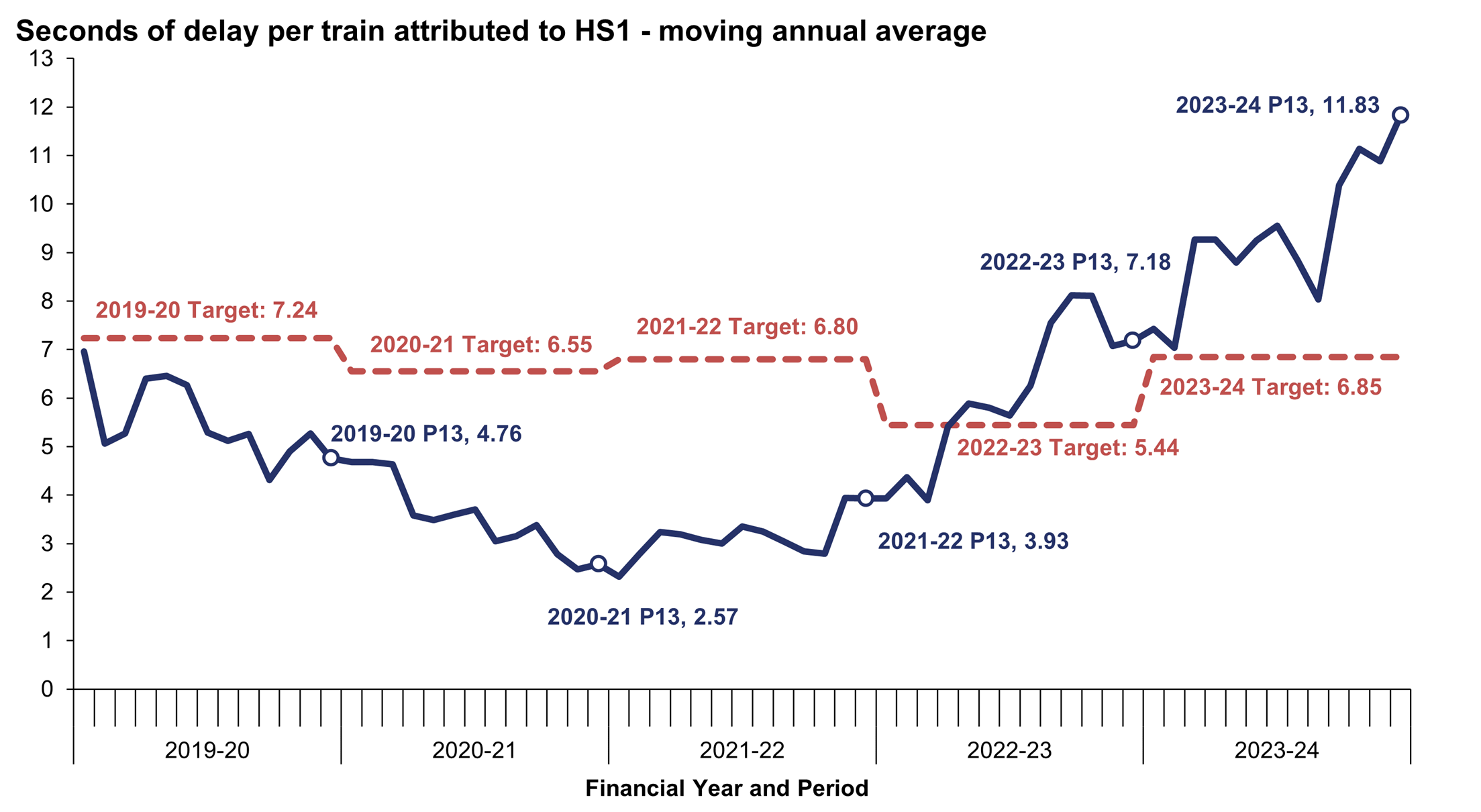Traffic volume
The total number of trains timetabled from 1 April 2023 to 31 March 2024 was 60,134. This is a 3% increase compared to the 58,140 in the previous year, but an 18% decrease compared to the 73,076 in April 2019 to March 2020 (the year before the pandemic).
International services increased by 14% in the latest year (to 16,442) compared to the previous year (14,438), remaining 7% below the number of services operated before the pandemic.
However, the domestic Southeastern North Kent Line (NKL) services in the latest year (17,142) were 35% below the number operated three years ago (26,324).
Please note that some of the figures included in this chapter are subject to revision due to various factors including the re-classification of some delay incidents.
Figure 2.1 Number of passenger train services timetabled on HS1, 1 April 2010 to 31 March 2024

Source: HS1 Ltd Performance Floor Report
The number of freight train services operated on HS1 fell by 41% compared to the previous year (down from 393 last year, to 233). This is the third successive year in which the number of freight train services has decreased. The current number is 41% lower than the 392 freight trains in April 2019 to March 2020 (before the pandemic).
Figure 2.2 Number of freight train services timetabled on HS1, 1 April 2010 to 31 March 2024

Source: HS1 Performance Floor Report
Train service performance
We monitor two measures of train service performance. Firstly, HS1 Ltd submits to us quarterly and annual performance floor reports demonstrating its operational performance against minimum thresholds set out in its Concession Agreement. These state that the proportion of services delayed by HS1 Ltd in a quarter should not exceed 15%, and in a year must not exceed 13%.
However, both HS1 Ltd and its users expect much higher levels of performance than this. As a result, HS1 Ltd set itself – and its subcontractor NR(HS) – a separate, more stretching, target, which we also monitor.
For this year HS1 Ltd and NR(HS) agreed a less challenging target, at 6.85 seconds delay per train, than the 5.44 seconds target delay per train it had set itself in the previous reporting year.
Performance against minimum threshold
Table 2.2 shows a breakdown of performance for the year ending 31 March 2024.
Table 2.2 HS1 Ltd train service performance: 1 April 2023 – 31 March 2024
| Total number of trains timetabled | Total number of delayed trains (attributed to HS1) | Delayed trains (attributed to HS1) as a percentage of timetabled trains | Total number of delayed trains (unknown cause) | |
|---|---|---|---|---|
| Domestic (London St. Pancras – North Kent Line via Ebbsfleet International) | 17,142 | 113 | 0.66% | 1 |
| Domestic (London St Pancras – Ashford International) | 26,317 | 221 | 0.84% | 13 |
| International | 16,442 | 124 | 0.75% | 2 |
| Freight | 233 | 0 | 0.00% | 0 |
| Total | 60,134 | 458 | 0.76% | 16 |
Source: HS1 Performance Floor Report
The proportion of trains delayed by HS1 Ltd-attributable incidents in the latest year was well within the allowable standards set out in the Concession Agreement (13%), at 0.76%. However, the 458 delayed services attributable to HS1 Ltd in the latest year was a 79% increase on the 256 services delayed in the previous year. Additionally, the number of delayed trains for the latest year increased by 84% compared with the 249 services delayed four years ago before the pandemic. The quarterly breakdown of these delays is shown in Figure 2.3.
Figure 2.3 Delayed train services per 1,000 trains operated attributed to HS1 Ltd by quarter, 1 April 2017 to 31 March 2024

Source: HS1 Performance Floor Report
Performance against stretch target
In terms of its stretch target for the latest year (6.85 seconds delay per train), the average delay per train due to HS1 Ltd-attributable incidents was nearly five seconds worse than the target, at 11.83 seconds.
The average delay in the latest year was more than four seconds longer than the previous year, where the average was 7.25 seconds. Figure 2.4 shows the year-on-year average delay per train service attributed to HS1 Ltd so far this control period.
Figure 2.4 Moving annual average delay per train service attributed to HS1 Ltd by period, 1 April 2019 – 31 March 2024

Source: HS1 Ltd Asset Management Annual Statement (AMAS), 1 April 2023 to 31 March 2024.
In summary, there has been a trend of increasing delays over this year and HS1 Ltd did not achieve its stretch target.
We have seen HS1 Ltd focus on returning to the level of train service provision agreed with operators, and we will continue to challenge HS1 Ltd and NR(HS) to ensure that they are minimising delays through best practice asset management, as discussed in the following chapter.

